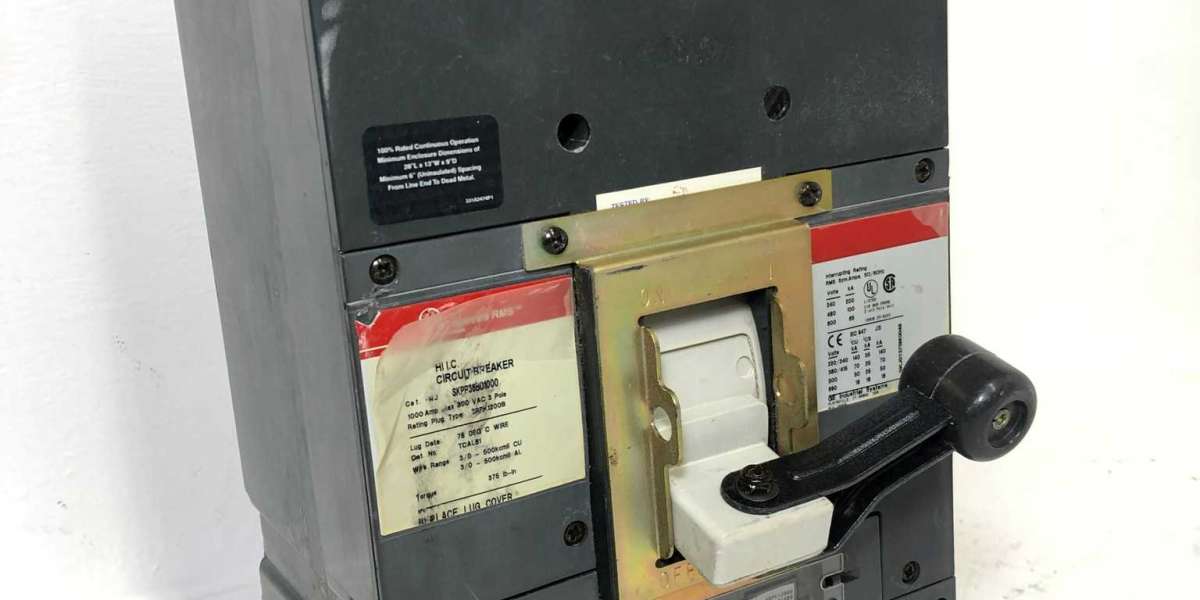Air circuit breakers offer a variety of protection functions to safeguard power lines and electrical equipment from overload, under voltage, short-circuit, etc. They also require less maintenance compared to oil-type circuit breakers.
They typically consist of two pairs of contacts. One pair carries the current and is made of copper metal. The other pair is called the arcing contact and is made of carbon.
Used Circuit Breakers
The electrical contacts in a circuit breaker must not only carry current but also withstand the heat of the arc that is produced when interrupting (opening) them. This arcing is dangerous and potentially explosive, so the breaker must incorporate various mechanisms to divide and extinguish it.
The frame of a circuit breaker provides the rigidity and strength required to successfully interrupt the current. It can be made from precise metal pieces molded together in an insulated frame or it may be a welded or bolted metal assembly. The frame also insulates and separates the operating mechanism from the current.
There are many different types of circuit breakers available for use in the power grid and in homes. Some are low to medium voltage and housed in a breaker box, while others are high-voltage and used in large infrastructure systems.
Some are designed for specific applications such as ground fault circuit interrupters (GFCIs) to protect against shock and electrocution in wet areas, or earth leakage circuit breakers (ELCB) to detect imbalanced current that could be returning via the earth wire. Others, like arc fault circuit interrupters (AFCI) are designed to detect different types of arcing electrical faults that older styles of breakers can miss, which can cause extreme heat in wiring and fire hazards in homes. They are being used in conjunction with traditional central breakers to provide a more complete safety system.
Molded Breakers
Molded breakers are built into an insulated case of glass polyester or thermoset composite resin to keep their components safe from external heat sources. They have multiple tripping mechanisms and are designed to interrupt excessive current flows, protecting equipment from damage or even fire. They have a high interrupting rating and are generally used in power distribution systems.
A molded case circuit breaker can be powered either by an electromechanical or solid-state mechanism. They are often equipped with current transformers and monitor the current to detect overload and short-circuit conditions. When the monitors detect an abnormal situation, they send a signal to the operating apparatus to trigger a trip. The breaker’s handle connects to the operation switch and can be manually operated. This switch opens and closes the molded case’s toggle mechanism to open and close contacts. circuit for sale at surplusrecord.
Depending on their design, molded case circuit breakers may have multiple poles. They can have one, two, or three poles, and each of these has a different voltage and current rating. When choosing the right breaker for your needs, consider the continuous current rating and how much arcing or fault current it can handle. It is also recommended to inspect the breaker frequently for unusual signs of wear and tear including cracked or broken cases, discoloration of the insulation, and burn marks from overheating.
Vacuum Circuit Breakers
Vacuum circuit breakers are used in medium voltage power systems. They have excellent current interruption capability and require less maintenance than other circuit breaker technologies. Unlike air circuit breakers, vacuum circuit breakers do not induce high overvoltages that could reduce insulation from other equipment. Vacuum circuit breakers are made up of a vacuum arc quenching chamber, current terminals, traction insulators, and an actuator. They have a longer mechanical life and large breaking capacity than their air counterparts. They are also easy to operate, inspect and maintain.
The arc-extinction medium of the VCB is vacuum and it has a much higher insulating strength than oil (in an oil CB) or SF6 (in SF6 circuit breakers). When the movable contacts move apart, they are ionized by the vacuum. This allows the contact surfaces to quickly recover their insulating strength and prevents the arc from persisting.
Typically, the VCB is housed in an arc shield and it has one or more sealed interrupter units per pole. The movable contacts in the interrupter unit are connected to an insulated operating rod linked with the opening mechanism. Stainless steel metallic bellows are used to allow the movable contacts to travel a few mm, depending on the working voltage. These bellows are essential because they determine the VCB’s ability to perform repeated operations without failure.
Air Circuit Breakers
Air circuit breakers are primarily used for controlling power station auxiliaries and industrial plants. These circuit breakers also offer protection to electrical machinery such as transformers, capacitors and generators. They are used when there is a possibility of fire or explosion hazards.
When the breaker’s operating mechanism is activated, it causes pressurized air to move upward through an arc chute, which is a chamber that surrounds the contact points. This air moves the arc upward where it is extinguished. Air blast circuit breakers are a great choice for arc quenching because they have high interruption current and lower arc voltage than other types of circuit breakers.
The arc chute can be made up of any material, but it is most commonly made from high temperature plastics reinforced with glass fiber or ceramics. The arc chute walls help achieve cooling by working as an insulator for the arc. The arc chute is also designed to separate the primary contacts from the arcing ones. The auxiliary and arcing contacts close before the primary contacts to protect them from damage.
A number of companies manufacture air circuit breakers. Some of these include Eaton (Ireland), ABB (Switzerland), Siemens (Germany) and Schneider Electric (France). The air circuit breaker market is dominated by the ABB group, which holds a dominant share of the global market.






